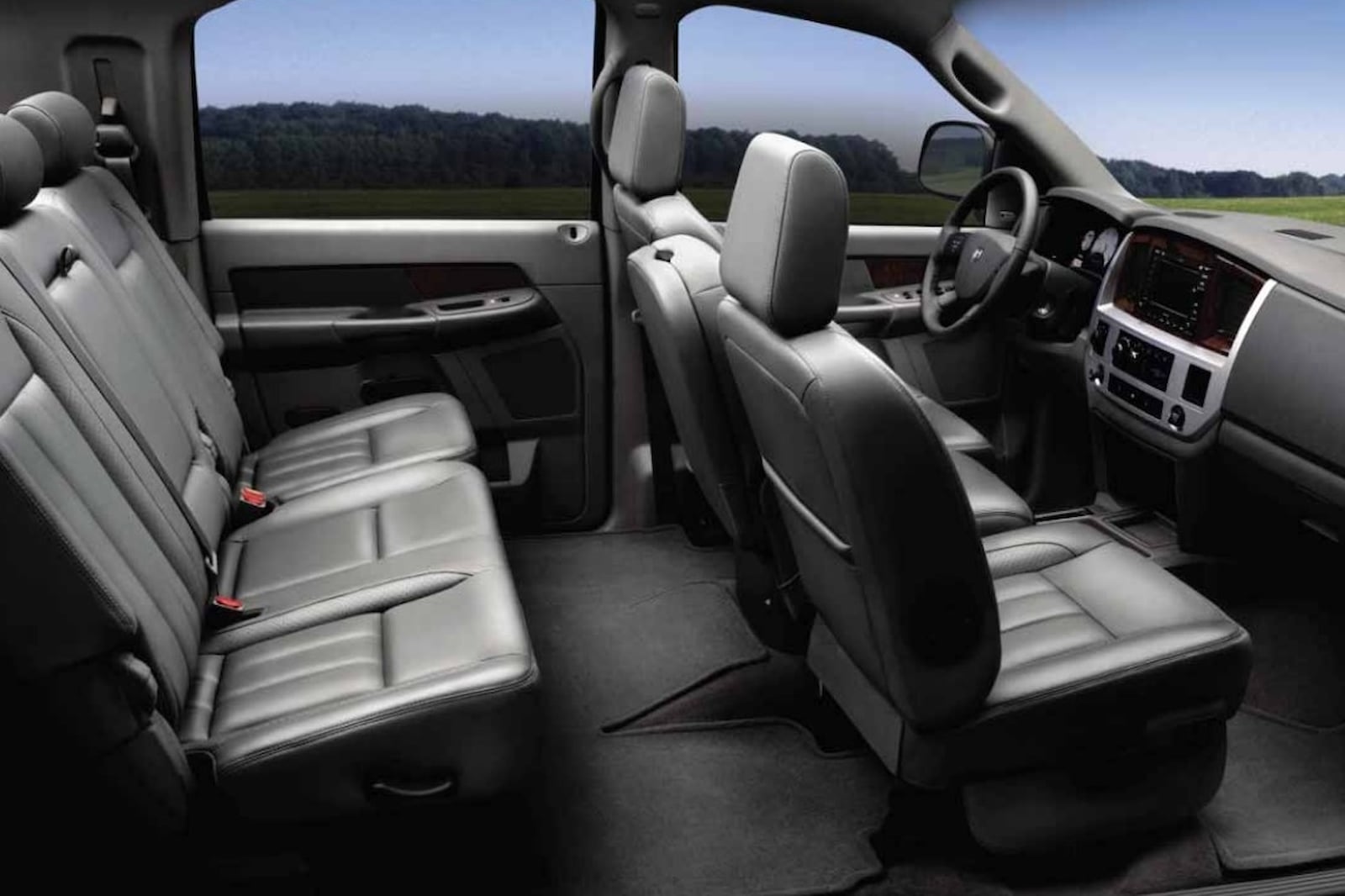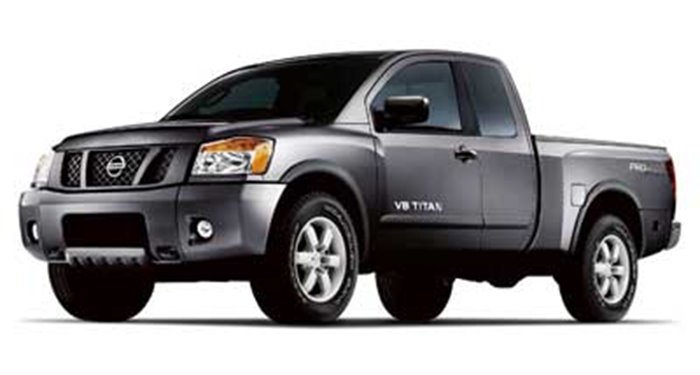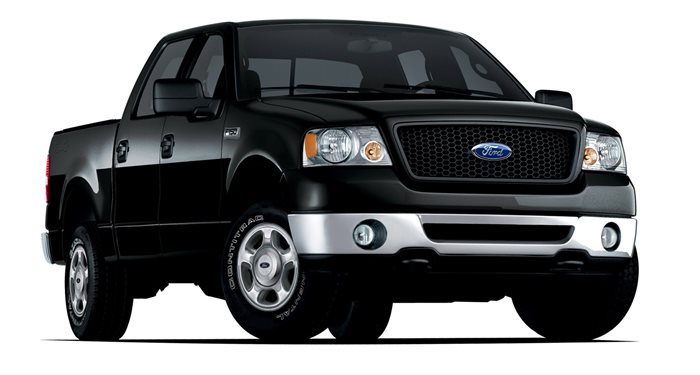The Chrysler OHV pushrod LA engine family was first introduced in 1964 and developed and refined over many years. Following big design upgrades and changes, these engines remained OHV designs but were renamed "Magnum" and relaunched in 1992. The 5.9 V8 was added in 1993, and a 8.0 V10 in 1994 - the latter a 5.9 V8 with two cylinders added. These original OHV Magnum engines are just upgraded LA engines and are not to be confused with the later AMC-developed SOHC "Magnum"/PowerTech 3.7 V6 and 4.7 V8 engines Chrysler used since 1998 that we cover above. Magnum was just a marketing term applied to both engines and vehicles.
The 5.9 V8 is criticized for a low power output for its size and a thirst for gas. The most frequently mentioned problem is the intake-manifold gasket leaking, specifically the gasket used between the two separate pieces of the two-piece intake manifold - the cast aluminum top part and its stamped steel bottom plate. This gasket is a common failure point, and when it starts to leak air, the engine loses vacuum and starts to run badly and perform poorly. This can at first go unnoticed until it causes the catalytic converter to become blocked, at which point the deterioration in the engine's performance will be dramatic. Replace the plenum gaskets at the first sign of symptoms such as pinging, poor running, and increased oil consumption - with the associated issues that come with oil consumption, such as fouled spark plugs and oxygen sensors.
Leaving it will lead to a ruined cat and a lot of other expenses and replacing it with a normal OEM gasket is virtually a guarantee that the problem will return. Catalytic converters fail at around 150,000 miles due to the potential of the leaky intake manifolds ruining the cats. Remember that a cat that disintegrates can damage the engine, as fragments can be sucked into the engine via the exhaust valves during the valve-overlap stage. There are various aftermarket fixes available like fitting a modified aftermarket one-piece plenum plate or a redesigned aftermarket intake manifold.
Blocked cats can cause a pressure buildup that can speed up the 5.9's next big issue - cracked cylinder heads. This is ironic because most people would regard cast-iron cylinder heads as particularly tough. Instead, the heads on the 5.9 are considered weak and many factors can bring on cracking - blocked cats or any type of overheating, for example. The heads usually crack between the valve seats. The valve seats are induction hardened on these engines and not pressed in. Most cracks are very small and may allow you to continue to use the engine but if you experience coolant mixing with oil, overheating, or misfires, the cracks are too big and must be seen to. Small cracks can turn into big ones, and it's not a gamble worth taking. The only way to fix this problem is to fit upgraded aftermarket cylinder heads at considerable expense.
Timing chains are not particularly troublesome, but they are not lifetime items and may elongate enough by 100,000 miles to start rattling and require replacement. Deferred oil changes and neglect will bring on the issue sooner but we would replace them by 150,000 miles, even if they still seem good. An elongated chain can jump teeth and cause serious engine damage through piston-to-valve contact. Most owners upgrade to a dual-row, twin-roller timing-chain kit for longer service life.
General reliability on the Magnum engines seems to be hit and miss and while some owners experience the mentioned problems, many do not. It can be summed up this way. Most owners will experience intake-manifold issues, so you might as well upgrade that part. Timing chains should be seen as consumables and should be replaced/upgraded at 150,000 miles at the latest. Cylinder heads on the 5.9 may cause no trouble at all if no previous cat damage or overheating caused them to crack. However, one cannot always be sure of the vehicle's history, so check them very carefully according to the mentioned symptoms to determine whether there is a problem. A fastidious previous owner who looked after their truck and stuck to the maintenance schedule religiously is a must. A Magnum looked after this way can reach 300,000-350,000 miles. However, you're likely to run into some kind of problem with these engines at some point just because they are already so old today.
Mileage: Faulty plenum gaskets can leak at any mileage. Cylinder heads crack following cat problems or overheating and not necessarily according to mileage. Timing chains have a finite life of between 100,000 and 150,000 miles. Catalytic converters can fail at around 150,000 miles - or sooner due to a neglected intake-manifold leak.
Cost: To fix a plenum-gasket leak, a plenum repair kit can be bought for around $185 (before installation) and replaces the plenum plate with a one-piece aluminum plate. A one-piece aftermarket intake manifold costs at least $700 before installation. A dual-row timing-chain kit, and timing-cover gasket set will cost around $100 before installation. 46-state legal catalytic converters cost between $230 and $350 before fitment and 50-state legal cats at least between $360 and $860. Cracked cylinder heads can be welded or repaired and the cost will vary depending on the extent of the damage. Used cylinder heads vary in price too and might have to be considered, as new ones are usually unavailable today. And engine replacement is around $7,000.
How to spot: Leaky plenum/intake manifold gaskets will cause excessive oil consumption, fouled spark plugs and oxygen sensors, rough idling, misfiring, pinging, bad economy, and a lack of power. Opening the throttle body and doing a visual inspection is a good idea - the throttle body should be relatively clean inside and oil or sludge points to a bad plenum gasket. Or remove the positive crankcase ventilation (PCV) valve to confirm that there is air pressure; air should be coming out and if there is vacuum instead, the plenum gasket is leaking. Cracked cylinder heads may lead to overheating, misfires, oil/coolant leaks, milky oil due to coolant contamination, or oily coolant due to oil contamination. A cylinder leakdown test will confirm the diagnosis of a cracked head. An elongated timing chain may most commonly cause misfires, but may also rattle or cause rough idling or reduced power.









 Acura
Acura
 Alfa Romeo
Alfa Romeo
 Aston Martin
Aston Martin
 Audi
Audi
 Automobili Pininfarina
Automobili Pininfarina
 Bentley
Bentley
 BMW
BMW
 Bollinger
Bollinger
 BrightDrop
BrightDrop
 Bugatti
Bugatti
 Buick
Buick
 Cadillac
Cadillac
 Caterham
Caterham
 Chevrolet
Chevrolet
 Chrysler
Chrysler
 Dodge
Dodge
 Ferrari
Ferrari
 Fiat
Fiat
 Fisker
Fisker
 Ford
Ford
 Genesis
Genesis
 GMC
GMC
 Gordon Murray Automotive
Gordon Murray Automotive
 Hennessey
Hennessey
 Honda
Honda
 Hyundai
Hyundai
 Ineos Automotive
Ineos Automotive
 Infiniti
Infiniti
 Jaguar
Jaguar
 Jeep
Jeep
 Karma
Karma
 Kia
Kia
 Koenigsegg
Koenigsegg
 Lamborghini
Lamborghini
 Land Rover
Land Rover
 Lexus
Lexus
 Lincoln
Lincoln
 Lordstown
Lordstown
 Lotus
Lotus
 Lucid Motors
Lucid Motors
 Maserati
Maserati
 Mazda
Mazda
 McLaren
McLaren
 Mercedes-Benz
Mercedes-Benz
 Mini
Mini
 Mitsubishi
Mitsubishi
 Nissan
Nissan
 Pagani
Pagani
 Polestar
Polestar
 Porsche
Porsche
 Ram
Ram
 Rimac
Rimac
 Rivian
Rivian
 Rolls-Royce
Rolls-Royce
 Spyker
Spyker
 Subaru
Subaru
 Tesla
Tesla
 Toyota
Toyota
 VinFast
VinFast
 Volkswagen
Volkswagen
 Volvo
Volvo